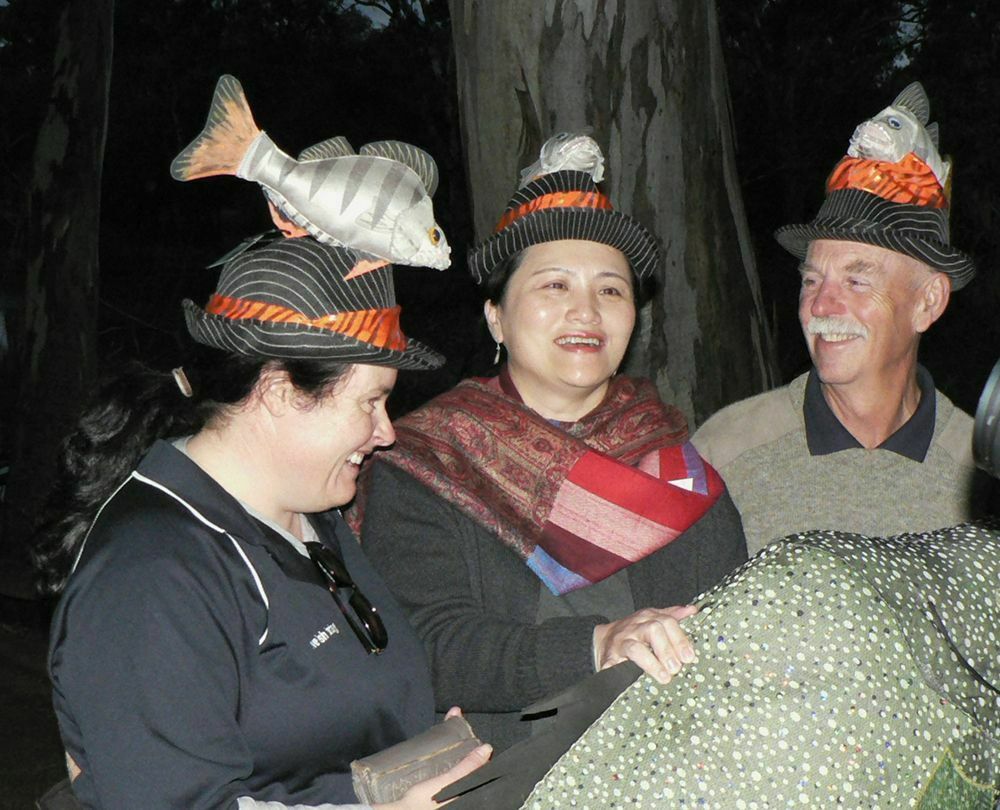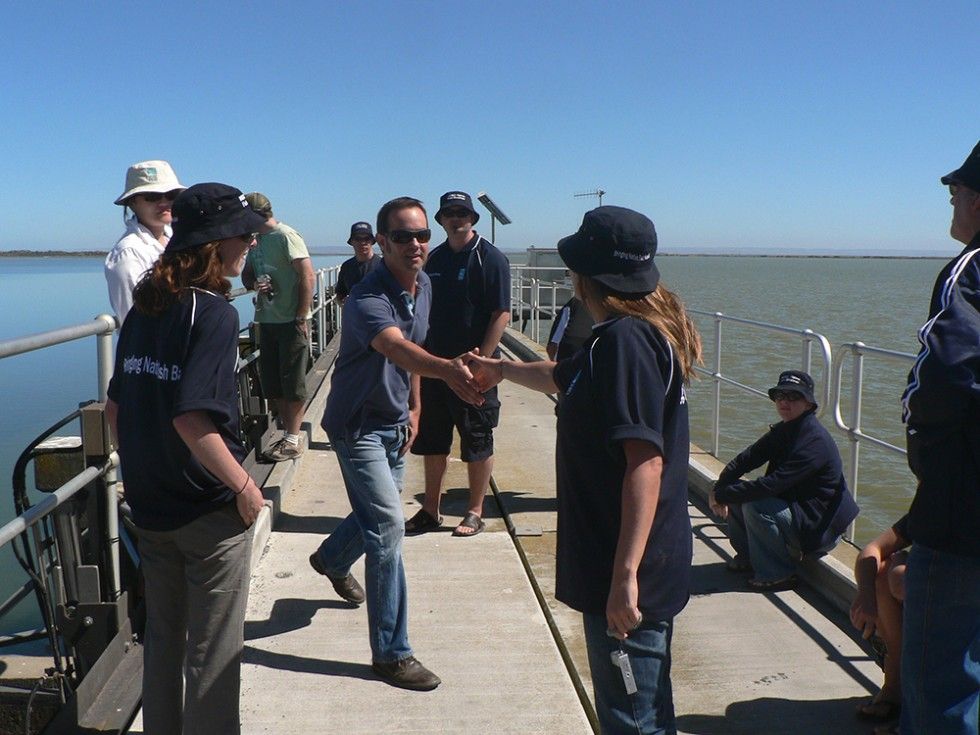Engaging Federal Government Agencies
The NFS formed an integral part of the Murray-Darling Basin Authority (MDBA), a federal government agency that manages aspects of the Basin’s ecosystems, focusing on sharing waters resources between environmental and consumptive uses, as well as directing the operation of the River Murray system. There were many ways in which the NFS connected with MDBA programs as well as other federal government agencies.
The Native Fish Advisory Panel which took a lead role in ensuring effective implementation of the NFS included a representative from the Federal Department of Sustainability, Environment, Water, Population and Communities. Given the broad range of programs and projects being implemented, this representative provided valuable support to the NFS, particularly in relation to implementation of recovery plans for threatened fish species including Murray cod.
The Basin Alien Fish Plan Taskforce, an important group associated with the NFS, also included a representative from the Invasive Animal CRC. This Taskforce had significant overlap in membership with the Vertebrate Pest Committee Pest Fish Working Group, which provided important linkages and sharing of information regarding national issues associated with alien fish management. The NFS contributed funding to a variety of invasive freshwater pest projects.
From within the MDBA, there were clear associations and interactions between the NFS and other initiatives such as The Living Murray program and the Sustainable Rivers Audit. Some research projects incorporated funding through both the NFS and The Living Murray program over time, and many research and management staff operated across programs, maximising connections. The Fish Passage Taskforce also included a representative from River Murray Water, which lies within the MDBA.
There were several workshops held in the early 2000s that helped inform the development and implementation of the NFS. During the life of the NFS there were also regular NFS forums and workshops. These proved an extremely important and effective method of engaging many NRM representatives including within other federal government departments such as Department of Agriculture, Fisheries and Forestry.
Engaging State and Territory Governments
While each jurisdiction within the MDB varies in how NRM is implemented, all include state and territory government departments which take the primary role in overseeing, funding and implementing environmental programs. Each jurisdiction produces and implements a variety of state and regional plans, as well as aligning with federal commitments.
Since these government departments are involved in many programs and projects related to the aquatic environment, the NFS recognised their importance as key partners.
The Native Fish Advisory Panel took a lead role in ensuring effective implementation of the NFS, and included representatives of all jurisdictions with primary responsibility for native fish conservation and fisheries management. In some cases, states also formed their own native fish advisory groups, which aimed to build jurisdictional relationships and understanding, although these varied in their success.


State and territory government departments incorporate a wide variety of staff involved in management, research, policy development and implementation. Given the NFS addressed many issues including habitat restoration, water and infrastructure management, invasive species, threatened species and fisheries management, the potential for engagement with government staff was significant. Many of these staff were directly involved in NFS projects including Demonstration Reaches, specific research projects, Native Fish Awareness weeks and NFA forums as well as community engagement activities. Others were involved in specific jurisdictional projects which had obvious associations and relevance to the aims of the NFS, such as river health, river rehabilitation and water management.
Where effective relationships were formed, there was a clear recognition that there were mutual benefits of working together to maximise native fish outcomes. However, there were some limited instances where there were perceptions of competing and conflicting goals and ownership. The ability to engage and influence senior management staff regarding the objectives and outcomes of the NFS sometimes proved more difficult. It was recognised that some relationships required perseverance in the long term, and that there was a need to continue to focus on building understanding of common interests and identifying opportunities to work together.
These issues further highlighted the value of having NFS coordinators who were embedded in state agencies. They were able to act as an effective conduit of information between the NFS and state government. Their strong networks and ongoing relationships with many state government staff maximised the potential of integrating the NFS goals with broad river rehabilitation programs.
Many of the state and territory government department staff involved in the NFS continue to work in the area of natural resource management. Therefore many of the achievements of the NFS of incorporating the needs of native fish within existing management programs are likely to continue and can be built upon.
